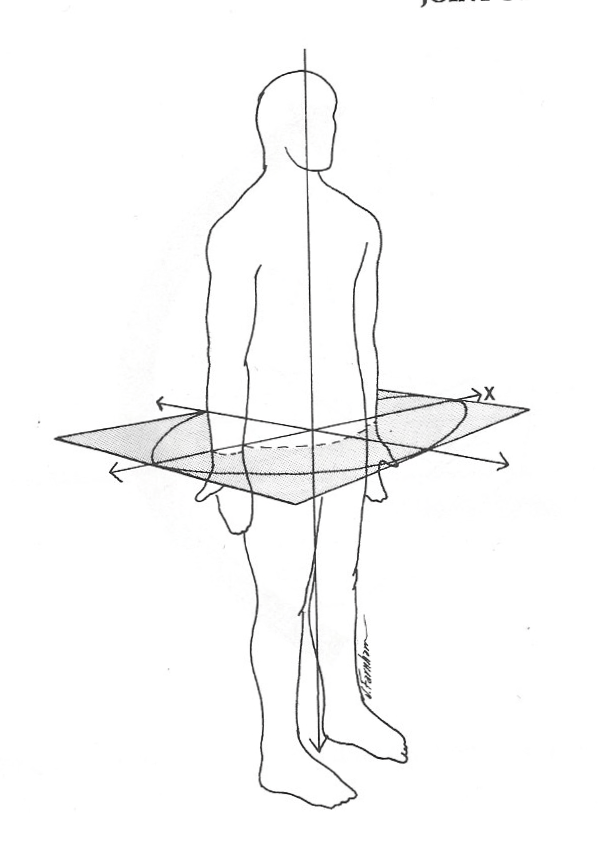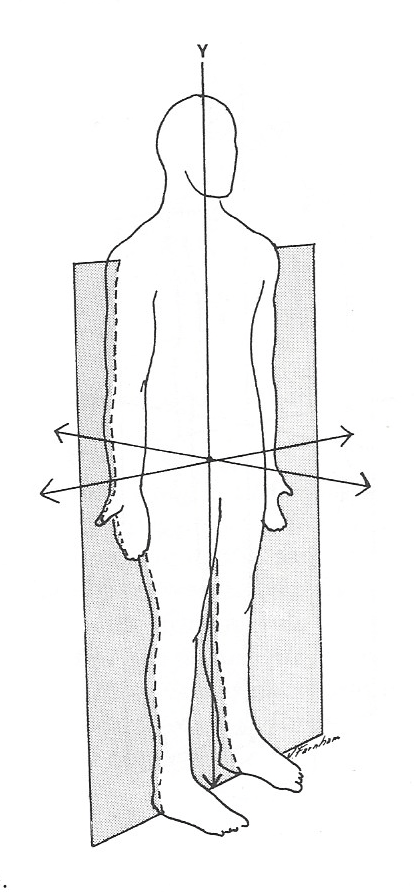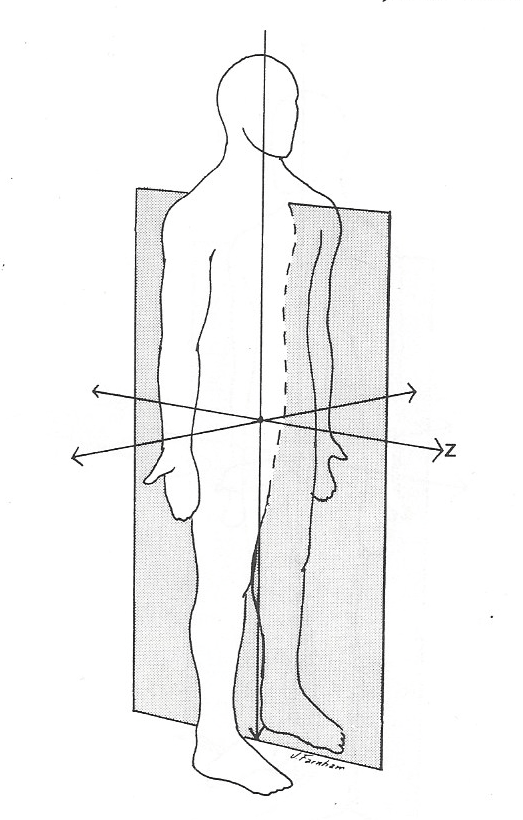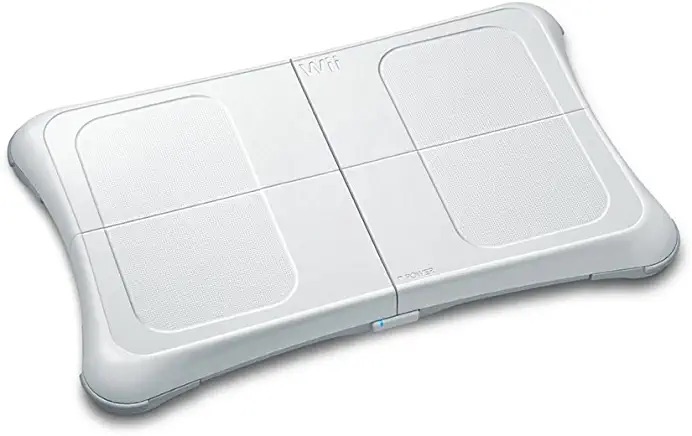Body reading is a valuable skill any Manual Therapist should practice. The essence of the skill is to build a working knowledge of the ideal center of gravity of the human body and to be able to effectively guess at the center of mass of the body which you are reading. Variances between these two lines indicate imbalances that offer clues to what to do to improve physical function. These variances also suggest which evolutionary layer is most active in the imbalance.
Body reading is an acquired skill that involves significant investment to master. An excellent overview of the subject and place to start learning this skill can be had by reading this book:
ANATOMY TRAINS
For this website, a simpler form of body reading is described, which is adequate for suggesting therapeutic tactics. Here we simply divide the body through its midpoint in the planes of the three dimensions: Top/Bottom, Left/Right, and Front/Back.
If a significant variance in the distribution of mass relative to the gravity (center) line in one of these planes the related category should draw therapeutic emphasis.
TRAINING PROTOCOLS

TRANSVERSE PLANE: ANIMAL
Does the body mass appear more dominant above/below the horizontal midline?

FRONTAL PLANE: VERTEBRATE
Does the body mass appear more dominant between the front and back of the body, or is there a slumped forward or hyperextended appearance? Toe walking is an example.

SAGITTAL PLANE: MAMMALS
Does the body mass appear more dominant on one side? Baseball pitchers often have an extreme example of this asymmetry. More common is a “hip hiking” pattern which is dominant on one side.
Body Reading can be assisted by the use of scales to measure relative loading through the body into the feet. A more advanced version of this is a device that not only measures weight variances between the left and right sides of the body, but also individually front/back for each foot, and presents the information not as weight, but rather as percentages of the total. More information on this device here:
OUTSTANDING STANCE ANALYSIS TOOL
THERAPIES, ACTIVITIES, AND THEMES
Isolating imbalance in one of the planes described above (perhaps using OutStanding) provides an opening for efficacious therapeutic intervention. These are the correlations:
TRANSVERSE PLANE => HOMOLOGOUS
FRONTAL PLANE => HETEROLATERAL
SAGITAL PLANE => HOMOLATERAL

BRAIN CONNECTIVITY
A curious attribute of Mammalian neurophysiology is that the structure of the white matter in the brain, the Corpus callosum, which is the tissue interconnecting neuronal circuitry, mimics the above model – there are left/right, front/back, and top/bottom interconnections, suggesting that this is a fundamental way in which Living Things organize there approach to physical space.
These interconnections also illustrate Paul MacLean’s Triune Brain model. Our understanding of the evolution has advanced significantly since the 1950s, but the evolutionary progression presented in his model still appears correct, just much more ancient in our ancestry than he anticipated:
The Top/Bottom connections (Animals) are represented by MacLean’s Reptilian Brain.
The Front/Back connections (Vertebrates) are represented by MacLean’s Paleomammalian Complex.
The Left/Right connections (Mammals) are represented by MacLean’s Neomammalian Complex.
META READING
A discussion of the mechanisms of movement our bodies:
MOVEMENT
A discussion on our Locomotive Core
THE LOCOMOTIVE CORE
A discussion on our core structural attributes:
THE FOUR CORES
A discussion on the models for our species presented on this website
EVOLUTIONARY PARADIGMS
